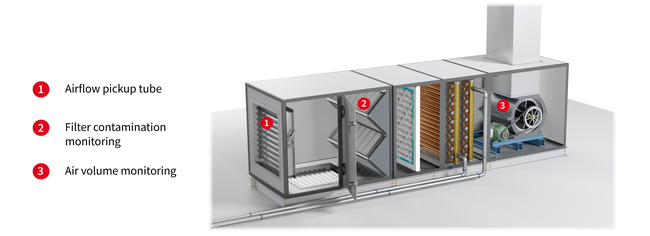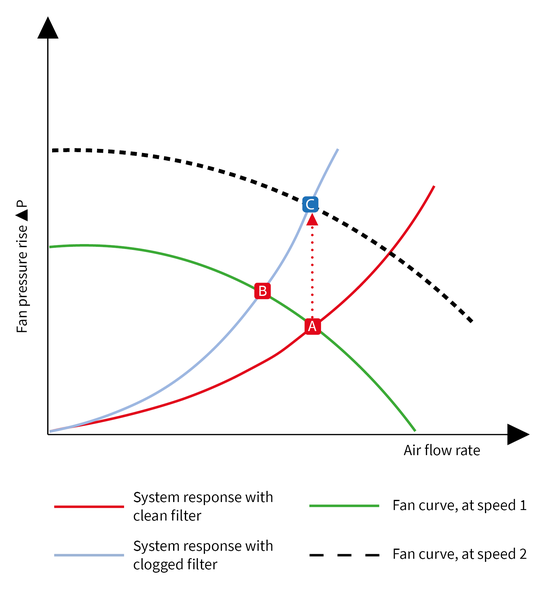A proper filter efficiency ensures a lower energy consumption in a HVAC system, means also that the CO2 emissions are reduced. The main purpose of air filtering is to ensure a proper indoor environment in terms of heating, ventilation and air conditioning. Clogged filters can cause undesired performance of an HVAC system, e.g. undersupply of air, energy efficiency loss, consumption increase among other inconveniences.
If a filter begins clogging the resistance to the air flow increases, so the pressure difference across the filter increases and the fan speed changes, the type 450 monitors the pressure drop over the filter, this can be transmitted to the system controller where a message to replace the filter will be generated. Another important parameter on the filter monitoring is the air flow on the system, this can be calculated through the formula Q=k*Δp, where the pressure difference is measured by type 450.

